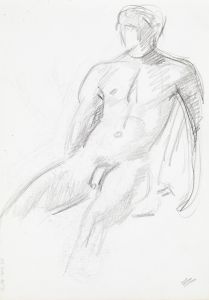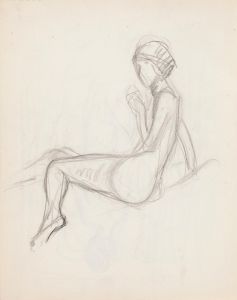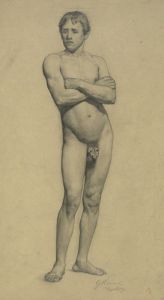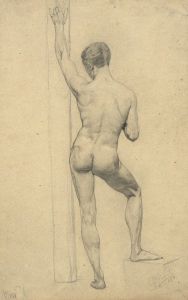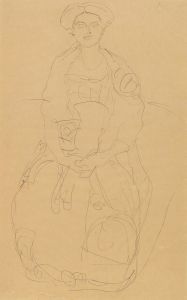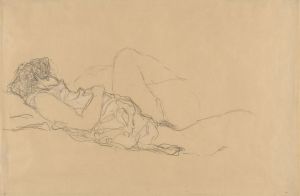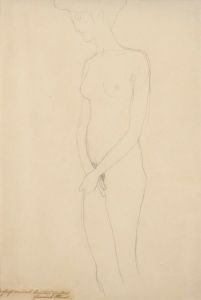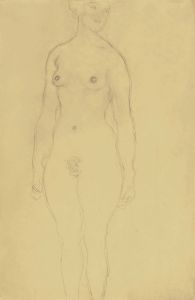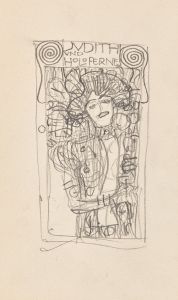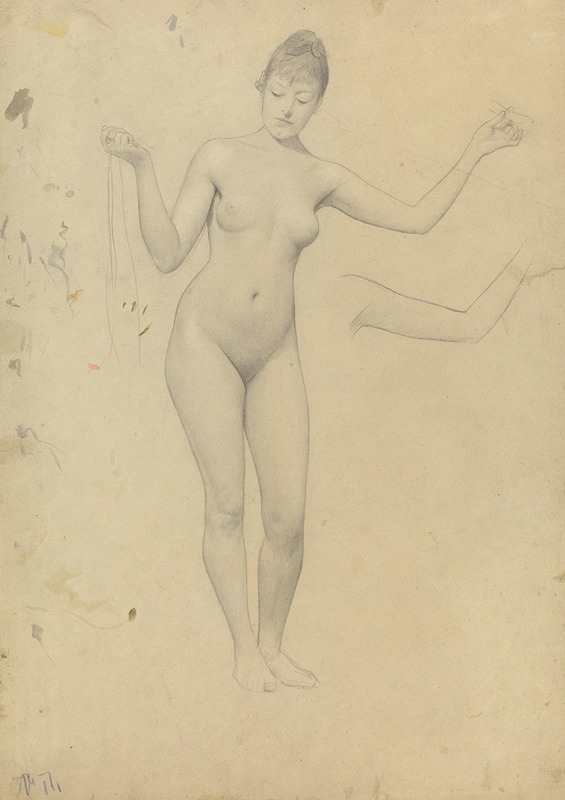
Stehender weiblicher Akt und Armstudie
A hand-painted replica of Gustav Klimt’s masterpiece Stehender weiblicher Akt und Armstudie, meticulously crafted by professional artists to capture the true essence of the original. Each piece is created with museum-quality canvas and rare mineral pigments, carefully painted by experienced artists with delicate brushstrokes and rich, layered colors to perfectly recreate the texture of the original artwork. Unlike machine-printed reproductions, this hand-painted version brings the painting to life, infused with the artist’s emotions and skill in every stroke. Whether for personal collection or home decoration, it instantly elevates the artistic atmosphere of any space.
Gustav Klimt, an Austrian symbolist painter, is renowned for his distinctive style and contribution to the Vienna Secession movement. One of his works, "Stehender weiblicher Akt und Armstudie" (Standing Female Nude and Arm Study), exemplifies his fascination with the human form and his skill in capturing delicate details through drawing. Although this particular piece may not be as widely recognized as some of his other works, it still reflects Klimt's artistic prowess and thematic interests.
Klimt was born on July 14, 1862, in Baumgarten, near Vienna, Austria. He began his formal artistic education at the Vienna School of Arts and Crafts (Kunstgewerbeschule) in 1876, where he studied until 1883. Klimt initially focused on architectural painting, but his style evolved over time, incorporating elements of symbolism and exploring themes of eroticism, beauty, and the female form.
"Stehender weiblicher Akt und Armstudie" is a drawing that showcases Klimt's mastery of line and form. The piece features a standing female nude, a subject that Klimt frequently revisited throughout his career. The drawing is characterized by its attention to anatomical detail and the fluidity of the lines that define the figure's contours. The arm study included in the work further demonstrates Klimt's interest in exploring different aspects of human anatomy and movement.
Klimt's drawings often served as preparatory studies for his larger paintings, allowing him to experiment with composition and form. His approach to drawing was meticulous, and he often produced numerous sketches before finalizing a composition. This process is evident in "Stehender weiblicher Akt und Armstudie," where the precision of the lines suggests careful observation and consideration.
Throughout his career, Klimt was known for his portrayal of women, often depicted in sensual and intimate poses. His work frequently explored themes of femininity and sexuality, challenging the conventions of his time. Klimt's depictions of the female form were both celebrated and criticized, reflecting the broader cultural tensions surrounding gender and sexuality in fin-de-siècle Vienna.
Klimt's influence extended beyond his own work, as he played a pivotal role in the Vienna Secession movement, which sought to break away from traditional academic art and embrace new, innovative styles. The movement encouraged artists to explore individual expression and experiment with different media and techniques. Klimt's contributions to the movement helped shape the direction of modern art in Austria and beyond.
While "Stehender weiblicher Akt und Armstudie" may not be as famous as Klimt's iconic paintings like "The Kiss" or "Portrait of Adele Bloch-Bauer I," it remains an important example of his draftsmanship and thematic interests. The drawing reflects Klimt's dedication to exploring the complexities of the human form and his ability to convey emotion and movement through simple yet expressive lines.
In summary, "Stehender weiblicher Akt und Armstudie" by Gustav Klimt is a testament to the artist's skill in drawing and his enduring fascination with the female form. Through this work, Klimt continues to captivate audiences with his ability to blend anatomical precision with artistic expression, solidifying his legacy as one of the leading figures in the world of art.





